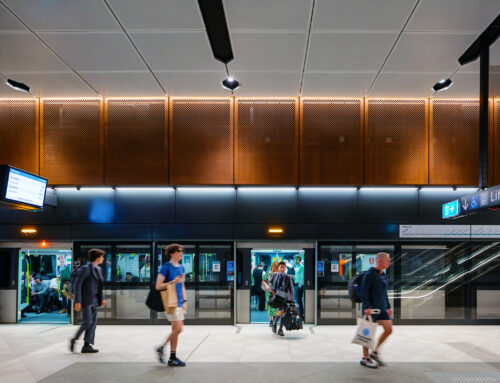Installation of commercial electric generators is often necessary to address emergency situations; however this kind of equipment is frequently very noisy and generates high vibration levels. They might be located near sensitive receivers, including residences or commercial centres with tenancies, cafes and shops. When an emergency situation arises, usually the noise is not the first concern; nevertheless, care must be taken to ensure plant noise and alarms are not heard and that plant room noise levels meet local regulations for the development.
In some cases however, there is need for the electric generator plants to support significant systems, so that in the case of a power outage they will continue to run at any time. In these cases emergency operation for plant rooms might be not an emergency for neighbours, meaning that the acoustic design is important not only to meet local regulations for tests and power outages, but to allow the rest of the development and neighbours to function normally when the plant room is operating.
This case involved the design of an electric generator room completely integrated inside a commercial centre with sensitive neighbours adjacent and directly above the plant room, and with the possibility of this plant room operating at any time.
During the design phases of the project it was necessary to maintain constant and complex coordination between our NDY Auckland Acoustic team and the architectural design, electric, fire and mechanical consultants. A flexible design was required, capable of producing accurate acoustic estimations for the final plant room noise levels in affected neighbouring tenancies. Our solution considered all proposed changes in wall, ceiling and door construction alongside changes in attenuators and louver selections. The liaison between acoustics and the wider consultant team was key for design success, with a compromise needed between all disciplines to achieve final noise targets.
The available space for acoustic solutions required ‘out of the box’ thinking, with our team considering shorter and efficient attenuators and incorporating lined bends into the system. Internal absorptive noise panels inside the plant room reduced reverberation, with a disconnected stud wall lining inside the plant room providing better attenuation for low frequency noise levels. The outcome also included a suspended ceiling with high density insulation and the careful review of tested data for the acoustic performance of proposed access doors and seals.
The project also considered that available noise data for the selected electric generator was not entirely accurate. Our team incorporated this into acoustic calculations when making estimations of final noise levels in the receivers. Delivering accurate estimations enabled us to give real scenarios to the client and project stakeholders, for the team to make informed design decisions, to help lower project risk and to maximise budget that could then be funnelled into further design upgrades.
After the design phase was complete and construction was underway, other factors came into the equation such as the availability of products in the market and difficulties in product installation. Our acoustic consultants played an active role in the project, providing prompt and precise advice on whether changes in construction would impact the final outcome and how to mitigate risks.
When construction was finalised, noise tests were conducted in nearby areas; first with the generator off to measure the normal background noise levels of all directly affected neighbours, and then repeated with the generator in normal operation. All estimated noise levels targeted in the surrounding areas were met with a less than 2 dB precision, as specified in all NDY design advice and briefs.
After confirming our target quantitatively, the best possible outcome was achieved when critical affected tenancies were informed that noise tests were conducted but they could not tell the equipment was up and running right next to them.
At all levels, numbers, calculations, estimations and substitutions complemented team coordination and good communication between consultants, our client and the builders. NDY’s project management provided successful acoustic outcomes, with the estimations written on paper translated into real results.










